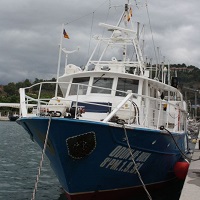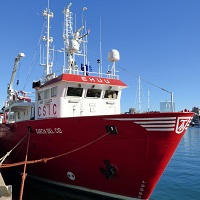Keyword
Concentration of suspended particulate material in the water column
67 record(s)
Type of resources
Categories
Topics
INSPIRE themes
Keywords
Contact for the resource
Provided by
Years
Formats
Status
-

CTD
-

CTD
-

CTD
-

CTD
-

CTD
-

CTD
-

CTD
-

1)Test predictions of the empirical model of Rodríguez et al. [The role of mesoscale Vertical motion in controlling the structure of phytoplankton in the ocean. Nature, vol. 410, 360-363 (2001)] for spectra that include cell aggregates biomass and zooplankton fecal pellets 2)Analysis of size structure of plankton and particulate matter transported into deep water along isopycnals surfaces. 3) Analysis of balance between the upstream and downstream flows of carbon through two reference surfaces: the maximum fluorescence subsurface and bottom of the euphotic layer.
-

The objective of the project RADIALES, formulated in 1990, aims at “understanding and modelling the response of the marine ecosystem to the sources of temporal variability in oceanographic and planktonic components, particularly foccusing in those factors and processes affecting biological production and potentially altering the ecosystem services”. This project represents the oldest multidisciplinary ocean observation initiative still active in Spain.
-

The objective of the project RADIALES, formulated in 1990, aims at “understanding and modelling the response of the marine ecosystem to the sources of temporal variability in oceanographic and planktonic components, particularly foccusing in those factors and processes affecting biological production and potentially altering the ecosystem services”. This project represents the oldest multidisciplinary ocean observation initiative still active in Spain.
 Catálogo de datos del IEO
Catálogo de datos del IEO